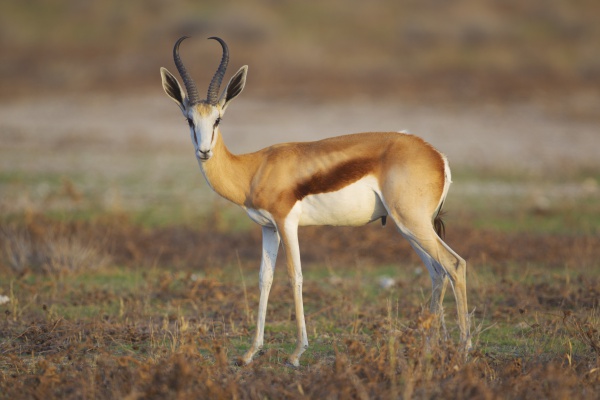Facts About Springbok
The springbok is a medium-sized antelope native to southern and southwestern Africa, renowned for its distinctive appearance and behaviors. First described by German zoologist Eberhard August Wilhelm von Zimmermann in 1780, the springbok is the sole species in the genus Antidorcas. These antelopes typically stand between 71 to 86 cm tall at the shoulder and weigh between 27 and 42 kg. Both males and females possess black, curved horns.
Springboks are easily identifiable by their white faces, a dark stripe running from the eyes to the mouth, and reddish-brown body markings. They are browsers, meaning they feed on leaves and shoots, and can sustain long periods without drinking water, deriving moisture from their food.
These antelopes are most active during dawn and dusk. They live in groups known as harems and are famous for a behavior called "pronking" in which they leap high into the air with stiff legs. Springboks breed throughout the year, with peaks during the rainy season. After a gestation period of five to six months, typically one calf is born.
Springboks thrive in the arid regions of southern and southwestern Africa and are listed as a species of least concern by the IUCN, thanks to their increasing population and lack of significant threats.
These animals are highly valued for their meat and skin, making them popular targets for game hunting. They are found in various protected areas and are also managed on private lands. Springbok meat is considered a delicacy, and their skins are in high demand for export.
In South Africa, the springbok holds cultural significance as the national animal and appears on the South African Krugerrand coin. It is also a symbol for various sports teams and organizations, including the national rugby union team of South Africa.

 Angola
Angola